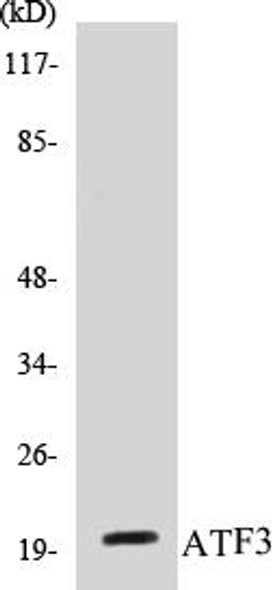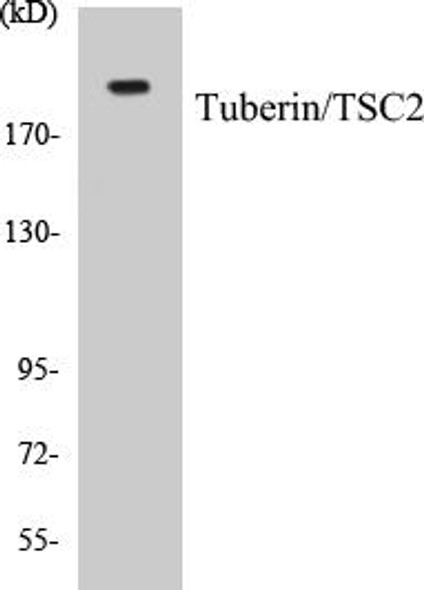Description
GRB10 Colorimetric Cell-Based ELISA Kit
The Human GRB10 Colorimetric Cell-Based ELISA Kit is specifically designed for the precise measurement of GRB10 levels in cell lysates and tissue samples. This kit offers exceptional sensitivity and accuracy, providing researchers with reliable and consistent results for various research applications.GRB10 is a key adaptor protein that plays a critical role in regulating insulin signaling, cell growth, and metabolism. Dysregulation of GRB10 expression has been linked to various diseases, including diabetes, cancer, and obesity, making it an important biomarker for studying these conditions and exploring potential therapeutic interventions.
With its user-friendly protocol and high-performance characteristics, the Human GRB10 Colorimetric Cell-Based ELISA Kit is an invaluable tool for researchers seeking to better understand the functions and implications of GRB10 in human health and disease.
| Product Name: | GRB10 Colorimetric Cell-Based ELISA |
| Product Code: | CBCAB00680 |
| ELISA Type: | Cell-Based |
| Target: | GRB10 |
| Reactivity: | Human |
| Dynamic Range: | > 5000 Cells |
| Detection Method: | Colorimetric 450 nmStorage/Stability:4°C/6 Months |
| Format: | 96-Well Microplate |
The GRB10 Colorimetric Cell-Based ELISA Kit is a convenient, lysate-free, high throughput and sensitive assay kit that can detect GRB10 protein expression profile in cells. The kit can be used for measuring the relative amounts of GRB10 in cultured cells as well as screening for the effects that various treatments, inhibitors (ie siRNA or chemicals), or activators have on GRB10.
Qualitative determination of GRB10 concentration is achieved by an indirect ELISA format. In essence, GRB10 is captured by GRB10-specific primary antibodies while the HRP-conjugated secondary antibodies bind the Fc region of the primary antibody. Through this binding, the HRP enzyme conjugated to the secondary antibody can catalyze a colorimetric reaction upon substrate addition. Due to the qualitative nature of the Cell-Based ELISA, multiple normalization methods are needed:
| 1. | A monoclonal antibody specific for human GAPDH is included to serve as an internal positive control in normalizing the target absorbance values. |
| 2. | Following the colorimetric measurement of HRP activity via substrate addition, the Crystal Violet whole-cell staining method may be used to determine cell density. After staining, the results can be analysed by normalizing the absorbance values to cell amounts, by which the plating difference can be adjusted. |
| Database Information: | Gene ID: 2887, UniProt ID: Q13322, OMIM: 601523, Unigene: Hs.164060 |
| Gene Symbol: | GRB10 |
| Sub Type: | None |
| UniProt Protein Function: | GRB10: an adaptor protein that inhibits insulin-stimulated IRS-PI (3)K-Akt signaling pathway by disrupting the association of IRS with the insulin receptor. Also binds activated PDGFR and EGFR. Preferentially localizes to the mitochondria, modulating the anti-apoptotic activity of mitochondrial Raf-1. Can translocate to the plasma membrane and lamellipodia. Three alternatively spliced isoforms have been described. |
| UniProt Protein Details: | Protein type:Adaptor/scaffold Chromosomal Location of Human Ortholog: 7p12.2 Cellular Component: cytoplasm; plasma membrane; cytosol Molecular Function:protein binding; SH3/SH2 adaptor activity; insulin receptor binding Biological Process: negative regulation of glucose import; negative regulation of Wnt receptor signaling pathway; insulin-like growth factor receptor signaling pathway; insulin receptor signaling pathway; negative regulation of insulin receptor signaling pathway; negative regulation of phosphorylation; positive regulation of phosphorylation; positive regulation of vascular endothelial growth factor receptor signaling pathway; response to insulin stimulus; negative regulation of glycogen biosynthetic process |
| NCBI Summary: | The product of this gene belongs to a small family of adapter proteins that are known to interact with a number of receptor tyrosine kinases and signaling molecules. This gene encodes a growth factor receptor-binding protein that interacts with insulin receptors and insulin-like growth-factor receptors. Overexpression of some isoforms of the encoded protein inhibits tyrosine kinase activity and results in growth suppression. This gene is imprinted in a highly isoform- and tissue-specific manner, with expression observed from the paternal allele in the brain, and from the maternal allele in the placental trophoblasts. Alternatively spliced transcript variants encoding different isoforms have been identified. [provided by RefSeq, Oct 2010] |
| UniProt Code: | Q13322 |
| NCBI GenInfo Identifier: | 6166186 |
| NCBI Gene ID: | 2887 |
| NCBI Accession: | Q13322.2 |
| UniProt Secondary Accession: | Q13322,O00427, O00701, O75222, Q92606, Q92907, Q92948 A4D258, A7VJ95, A8K0E6, D3DVM9, |
| UniProt Related Accession: | Q13322 |
| Molecular Weight: | 66,487 Da |
| NCBI Full Name: | Growth factor receptor-bound protein 10 |
| NCBI Synonym Full Names: | growth factor receptor-bound protein 10 |
| NCBI Official Symbol: | GRB10 |
| NCBI Official Synonym Symbols: | RSS; IRBP; MEG1; GRB-IR; Grb-10 |
| NCBI Protein Information: | growth factor receptor-bound protein 10; GRB10 adapter protein; GRB10 adaptor protein; maternally expressed gene 1; insulin receptor-binding protein Grb-IR |
| UniProt Protein Name: | Growth factor receptor-bound protein 10 |
| UniProt Synonym Protein Names: | GRB10 adapter protein; Insulin receptor-binding protein Grb-IR |
| Protein Family: | Growth factor receptor-bound protein |
| UniProt Gene Name: | GRB10 |
| UniProt Entry Name: | GRB10_HUMAN |
| Component | Quantity |
| 96-Well Cell Culture Clear-Bottom Microplate | 2 plates |
| 10X TBS | 24 mL |
| Quenching Buffer | 24 mL |
| Blocking Buffer | 50 mL |
| 15X Wash Buffer | 50 mL |
| Primary Antibody Diluent | 12 mL |
| 100x Anti-Phospho Target Antibody | 60 µL |
| 100x Anti-Target Antibody | 60 µL |
| Anti-GAPDH Antibody | 60 µL |
| HRP-Conjugated Anti-Rabbit IgG Antibody | 12 mL |
| HRP-Conjugated Anti-Mouse IgG Antibody | 12 mL |
| SDS Solution | 12 mL |
| Stop Solution | 24 mL |
| Ready-to-Use Substrate | 12 mL |
| Crystal Violet Solution | 12 mL |
| Adhesive Plate Seals | 2 seals |
The following materials and/or equipment are NOT provided in this kit but are necessary to successfully conduct the experiment:
- Microplate reader able to measure absorbance at 450 nm and/or 595 nm for Crystal Violet Cell Staining (Optional)
- Micropipettes with capability of measuring volumes ranging from 1 µL to 1 ml
- 37% formaldehyde (Sigma Cat# F-8775) or formaldehyde from other sources
- Squirt bottle, manifold dispenser, multichannel pipette reservoir or automated microplate washer
- Graph paper or computer software capable of generating or displaying logarithmic functions
- Absorbent papers or vacuum aspirator
- Test tubes or microfuge tubes capable of storing ≥1 ml
- Poly-L-Lysine (Sigma Cat# P4832 for suspension cells)
- Orbital shaker (optional)
- Deionized or sterile water
*Note: Protocols are specific to each batch/lot. For the correct instructions please follow the protocol included in your kit.
| Step | Procedure |
| 1. | Seed 200 µL of 20,000 adherent cells in culture medium in each well of a 96-well plate. The plates included in the kit are sterile and treated for cell culture. For suspension cells and loosely attached cells, coat the plates with 100 µL of 10 µg/ml Poly-L-Lysine (not included) to each well of a 96-well plate for 30 minutes at 37°C prior to adding cells. |
| 2. | Incubate the cells for overnight at 37°C, 5% CO2. |
| 3. | Treat the cells as desired. |
| 4. | Remove the cell culture medium and rinse with 200 µL of 1x TBS, twice. |
| 5. | Fix the cells by incubating with 100 µL of Fixing Solution for 20 minutes at room temperature. The 4% formaldehyde is used for adherent cells and 8% formaldehyde is used for suspension cells and loosely attached cells. |
| 6. | Remove the Fixing Solution and wash the plate 3 times with 200 µL 1x Wash Buffer for five minutes each time with gentle shaking on the orbital shaker. The plate can be stored at 4°C for a week. |
| 7. | Add 100 µL of Quenching Buffer and incubate for 20 minutes at room temperature. |
| 8. | Wash the plate 3 times with 1x Wash Buffer for 5 minutes each time. |
| 9. | Add 200 µL of Blocking Buffer and incubate for 1 hour at room temperature. |
| 10. | Wash 3 times with 200 µL of 1x Wash Buffer for 5 minutes each time. |
| 11. | Add 50 µL of 1x primary antibodies (Anti-GRB10 Antibody and/or Anti-GAPDH Antibody) to the corresponding wells, cover with Parafilm and incubate for 16 hours (overnight) at 4°C. If the target expression is known to be high, incubate for 2 hours at room temperature. |
| 12. | Wash 3 times with 200 µL of 1x Wash Buffer for 5 minutes each time. |
| 13. | Add 50 µL of 1x secondary antibodies (HRP-Conjugated AntiRabbit IgG Antibody or HRP-Conjugated Anti-Mouse IgG Antibody) to corresponding wells and incubate for 1.5 hours at room temperature. |
| 14. | Wash 3 times with 200 µL of 1x Wash Buffer for 5 minutes each time. |
| 15. | Add 50 µL of Ready-to-Use Substrate to each well and incubate for 30 minutes at room temperature in the dark. |
| 16. | Add 50 µL of Stop Solution to each well and read OD at 450 nm immediately using the microplate reader. |
(Additional Crystal Violet staining may be performed if desired – details of this may be found in the kit technical manual.)






